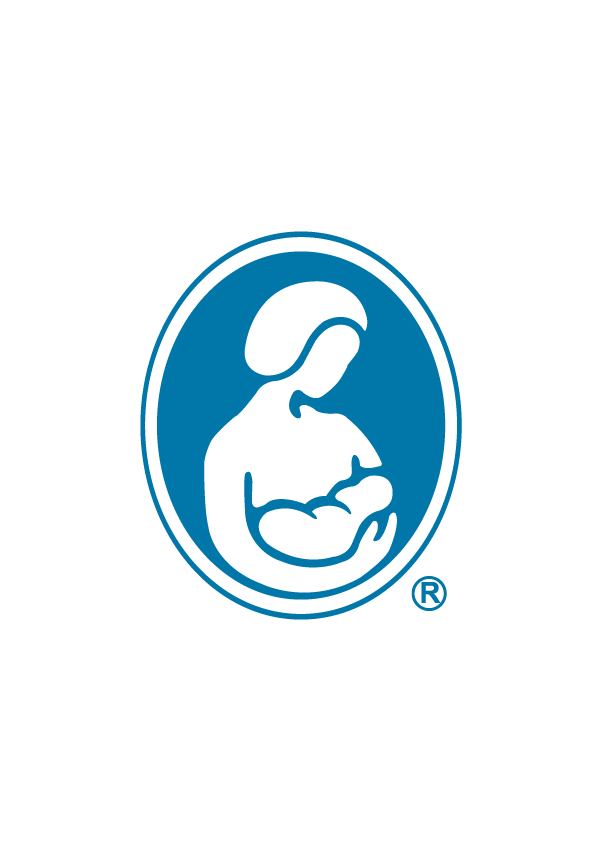Thomas W. Hale, Ph.D.
from Breastfeeding Abstracts, November 2004, Vol. 24, No. 1, pp. 3 & 4.
Virtually all breastfeeding mothers will at some time require the use of a medication. In the early postpartum period, the use of medications may become a contentious issue, with physicians sometimes hesitant to allow mothers to breastfeed while using needed medications, and mothers resistant to discontinuing breastfeeding. Fortunately the average transfer of most medications into human milk is exceedingly low, and therefore mothers are sometimes justified in resisting suggestions to discontinue unless the reasoning of the physician is sound and based on good science.1 But how do health professionals evaluate the situation and make sound judgments concerning safety of the medication in each particular mother/infant? The data below should provide some useful guidelines.
几乎所有哺乳期的妈妈都会在某些情况下有用药的需求。在产后的早期阶段,药物的使用可能成为一个争议的问题。当哺乳期妈妈必须用药而不想停止哺乳时,医生也会犹豫是否同意妈妈继续哺乳。幸运的是,大多数药物通过代谢转化进入母乳的含量都非常的少,因此,在适当的时候,母亲是有理由拒绝中止哺乳的建议,除非医生的建议是合理的,是有可靠的科学依据的。1但是,对于每一个特定的母亲或婴儿,其用药安全,医务人员究竟怎样来评估,并做出合理判断的呢?下面的数据应该可以提供一些有用的指导。
Milk Production and Drugs
母乳产出和药物
The clinical dose of medication transferred to the infant is largely a function of how much milk the infant ingests and the amount of medication present in the milk. Most mothers with young infants produce approximately 150 cc of milk per kilogram of infant weight per day. This amounts to about 700cc daily. The actual amount varies enormously by mother, and even from one week to the next. As the infant ages and with the institution of solid feedings, the actual rate of milk production normally declines to less than a few hundred cc per day at one year or later. Thus milk transfer is a highly variable function.
进入婴儿体内的临床药量取决于婴儿消化母乳的多少和进入母乳中的药量。大部分婴儿的母乳妈妈,按宝宝每公斤体重大约每天产奶150 CC。也就是每天700 CC左右。每个妈妈实际的产奶量差异很大,甚至同一个妈妈每周的产奶量都不尽相同。随着宝宝年龄的增长以及固体辅食的摄入,乳汁的实际产量会越来越少,通常在一年或一年后会下降到每天几百毫升的水平。因此,乳汁中的药物量是一个充满变量的函数。
However, because the clinical dose of medication transferred to the infant is largely a function of how much milk the infant ingests, after 6 months and in those infants who start on solids, the older the infant, the relatively less medication they receive. In a 14-month-old breastfeeding baby, the volume of milk provided is often so low that the dose of maternal medication transferred to the infant is minimal to nil. So stage of lactation is an important factor in determining the risk of using various drugs in breastfeeding women. After about 6 months, the later the stage of lactation, the lower the dose of medication transferred to the infant. Also, the older infant the better it can metabolize and eliminate various drugs.
然而,因为转入婴儿的临床药量主要取决于婴儿消化的奶量,所以,6个月后和开始添加辅食的婴儿,吸收的药量就相对少一些。一个14个月大的母乳宝宝,通常所需的母乳量已经很低了,所以用药后的母乳转入婴儿体内的药量接近为零。所以,哺乳的阶段是一个重要因素,它决定了哺乳母亲使用各种药物的风险。大约6个月后,越靠后的泌乳阶段,转入婴儿体内的药量就越低。而且,孩子越大,代谢和排除各种药物的能力就越强。
In the first 72 hours of milk production (colostral phase), there are numerous gaps between the lactocytes in the breast, and drugs and proteins may transfer into human milk relatively easily. However, the absolute amount of colostrum is generally so low (30-60 cc/day) that the relative dose of medication the infant receives is actually quite low during this period. It is only after milk production is high (600 cc/day) that one must begin to worry about the dose of medication transferred.
在乳汁产生的头72小时(初乳期),乳腺细胞之间有很多空隙,药物和蛋白转入母乳中相对要容易一些。然而,初乳的绝对吸收量一般很少(30-60 CC/每天),因此在这个阶段,对于药物,婴儿的相对吸收量实际很低。只有当母乳的产量很高(600 CC/每天)时,我们才开始需要担心药物的转入量。
Relative Risk Factors to Infants
婴儿相关的危险因素
The risk to infants is solely determined by the amount of the drug transferred via the milk. While this is often difficult to determine with accuracy, we know that most infants ingest around 150 cc of milk per kilogram per day. With this estimate and the concentration of medication in human milk we can estimate rather closely the clinical dose transferred each day. While perhaps fewer than half of all medications have been studied in breastfeeding mothers, published studies are available for many popular drugs in breastfeeding mothers.2, 3 Unfortunately, none of this data is published in prescribing information or the PDR so a mother may have to search for this information. On average, less than 1-4% of the maternal dose transfers to the infant. Very few drugs exceed this level, and those few include the CNS-active drugs, the antidepressants, and a few other very lipid-soluble drugs. In general, we do not become overly concerned about a medication until its transfer to the infant approaches 10% or more of the maternal dose.4 Termed relative infant dose (RID), this figure is measured by dividing the infant’s dose via milk (mg/kg/day) by the mother’s dose (mg/kg/day). There are fortunately very few drugs that exceed this safety level of 10%. Metronidazole (Flagyl, which is really quite safe), atenolol, potassium iodide, lithium and a few others may exceed this 10% level. In general, if the RID of a medication is less than 10%, it is probably pretty safe to use.
药物对婴儿的危险性只决定于转入母乳的药量。然而,转入量的精确值一般很难确定,我们知道大多数婴儿每天每公斤体重消化150 CC的母乳。鉴于此估计值和母乳中的药物浓度,我们可以相当精确地估计每天的临床转入药量。因为可能仅有少于一半的药物在哺乳母亲身上被实验过,因此很多常用药物的研究公告也可用于哺乳妈妈。2,3遗憾的是,数据并没有在处方信息上或PDR上公布,因此妈妈可能要寻找这类信息。平均来说,少于1-4% 的母体药量会转给新生儿。只有极少种药物能超过这个水平,包括神经中枢药物、抗抑郁药和一些其他的脂溶性药。一般说来,我们不过分关注一种药,除非它的转入量接近或超过10% 的母体摄入量。4 有一个术语叫相对婴儿剂量(RID),这个数据的算法是每天每公斤婴儿的摄入量(毫克)除以每天每公斤母体的摄入量(毫克)。幸运的是,很少的药物超过10% 这个安全值。甲硝唑(灭滴灵,其实是相当安全的),阿替洛尔,碘化钾,锂和一些其他药物可能超过10%。一般来说,如果RID少于10%,就是相当安全的药物了。
Know your medication
了解你的用药
It is important that the advisor understand just how toxic a medication is to the mother and infant, as this can directly affect the risk of breastfeeding. It should be obvious that mothers requiring hazardous medications such as anticancer drugs, methotrexate, certain antimanic drugs such as lithium, and others, should at least temporarily discontinue breastfeeding. Obviously, the more toxic a medication, the greater the degree of risk to the infant. Therefore, avoid taking a highly toxic medication while breastfeeding if at all possible, and avoid breastfeeding if a medication must be taken that is considered extremely toxic.
指导用药的人员,了解药物对母亲和婴儿有怎样的毒性是很重要的。,因为这会直接影响母乳喂养的风险。如果母亲在用危险的药物,例如抗癌药,氨甲喋呤,某些抗燥狂的药,例如锂或其他,则很明显地,母亲应该暂停母乳喂养。显而易见,毒性越大的药物,对于婴儿的危险度就越大。所以,母乳喂养过程中,应该尽一切可能避免使用高毒性的药物。如果必须使用毒性特别大的药物,就要避免哺乳。
Drugs that have the potential to suppress the production of milk are also relatively contraindicated. Medications such as bromocriptine and cabergoline are potent inhibitors of milk production. Perhaps less active, but still important lactation suppressants include estrogens in birth control products5 and possibly pseudoephedrine in cold remedies.6 These should be avoided if possible.
一些被认为可能抑制泌乳的药物也是相对禁止的。比如溴麦角环肽和卡麦角林是母乳的强效阻滞剂,也许只是减少活性,但是依然是重要的泌乳抑制剂,包括用于避孕的雌激素产物5和治疗感冒的伪麻黄碱也可能存在风险。6应尽可能避免这些药物。
Summary总结
Fortunately, the transfer of most medications into human milk is quite low. We have thousands of studies presently available which suggest that most medications can be safely used in breastfeeding mothers. Some caution is obviously needed with certain medications such as lithium, anticancer agents, and radioactive products, but the vast majority of medications transfer into milk in subclinical levels and pose little problem to a healthy breastfed infant.
幸运的是,大部分药物转入母乳中的剂量都非常低。我们有数以千计的研究结果表明,大多数药物可以安全使用于哺乳期的母亲。但一些特定药物很明显地是必须谨慎使用的,比如锂,抗癌因子和放射产物。但是绝大多数药物转入母乳是在亚临床水平,对健康的母乳宝宝不会有影响。
A mother and her physician must always weigh the risk to the infant of the medication in milk against the enormous benefits offered by breastfeeding. Mothers should resist discontinuing breastfeeding until they have consulted with a physician who is versed in the safety of medications in breastfeeding mothers. Almost without exception, drug information inserts warn against the use of the medication in breastfeeding mothers. Pharmaceutical firms do not want the liability, so they universally warn patients to not breastfeed. But these recommendations are often not supported by research. By working together, the mother and her physician can almost always find a safe and suitable drug to treat her condition while maintaining this most important breastfeeding relationship.
在母乳喂养所提供的巨大好处下,母亲和她的医生总是需要权衡母乳中药量对婴儿可能造成的风险。母亲应该坚持哺乳,直到他们咨询了精通母乳喂养用药安全的医生。几乎无一例外,药物的说明总是在警告哺乳母亲的用药,因为制药公司不想承担责任,普遍警示病人不要母乳喂养。但是这些建议往往没有研究所证实。通过共同努力,母亲和医生总能发现一些安全的,合适的药物来治疗母亲的病症,并维持最重要的母乳喂养。
(Anna Bai翻译,何佳、郝娜 校稿,Shiuh-jane、Daisy审稿)
References
1.Hale, T. W. and K. F. Ilett. Drug therapy and breastfeeding. From theory to clinical practice. London: Parthenon Press, 2002
2.Hale, T. W. Medications and mothers‘‘ milk. 11 th ed. Amarillo. TX: Pharmasoft, 2004.
3.Briggs, G. G., R. K. Freeman and S. J. Yaffe. Drugs in pregnancy and lactation: A reference guide to fetal and neonatal risk. 4 th ed. Philadelphia, PA: Lippincott, Williams and Wilkins, 1994.
4.Bennett, P. N. Use of the monographs on drugs. In: Drugs and Human Lactation. Amsterdam: Elsevier, 1996.
5.Lonnerdal, B., E. Forsum,and L. Hambraeus. Effect of oral contraceptives on composition and volume of breast milk. Am J Clin Nutr. 1980; 33:816-24.
6.Aljazaf, K., T. W. Hale, K. F. Ilett et al. Pseudoephedrine: Effects on milk production in women and estimation of infant exposure via breastmilk. Br J Clin Pharmacol. 2003; 56:18-24.
下图是美国卫生部公开建立的针对医护人员的药物与母乳喂养的英文数据库的链接。妈妈们可以将药物的英文名输入搜索,搜索结果包含孕产妇和婴幼儿的用药量,药物对母乳喂养的婴儿及对妈妈泌乳的影响,以及可替代的更安全的药物。建议妈妈们可以将相关信息提供给医生进行参考。
http://toxnet.nlm.nih.gov/

